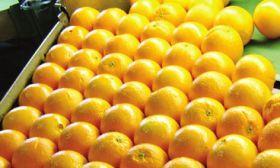
While Australian orange exports were down substantially in 2010 due to the extremely light crop of extraordinarily large fruit, the quality-conscious Japanese market shone through.
“Japan has been an outstanding market for us this year,” said Judith Damiani, CEO of Citrus Australia. “Volumes during our peak July-September season reached 18,000 tonnes, up from 15,500 tonnes in the same period last year, and this looks to be our biggest year yet.”
Those volumes make Japan the top export market for Australian citrus in 2010, supplanting the US, which has dropped back to third place behind Hong Kong.
“There was a desire by more grower-packers to ship to the fixed-price Japanese market as against the consignment market option of the US this year,” noted Brian Charles, general manager of exports for Fresh Produce Group, which has enjoyed “a very good year” in Japan.
Japanese buyers are seeking to forge more direct supply links to Australian growers, he said. “They are very keen to know and get involved in direct supply, as against buying from brokers,” Mr Charles explained. “Quality will always be the main determinant of success `in this market`. Cheap pricing will never compensate for poor quality.”
Similarly, the Australian citrus industry is also keen to gain a better understanding of the Japanese market, and learn how it can further develop its position there. Indeed, the Japanese market was the focus of a session at this year’s national citrus conference, featuring insights from New Zealand kiwifruit marketer Zespri and major citrus importer Celsus Export.
But the industry’s Asian gaze is not confined to Japan. It is also bidding to improve access to Korea and mainland China, where the need to eradicate the pest fullers rose weevil (FRW) under the protocols has stymied shipments.
“We’re taking a systems approach to managing FRW and there’s been a lot of good research on it in Australia,” said Ms Damiani. “Growers and packers are going to a lot of effort setting aside orchards in order to go out and provide these markets with suitable fruit this coming season.
The new fumigant Vapormate also looks set to bring a breakthrough. “We’ve just finished trialling Vapormate here and presented the results to the Korean quarantine authorities – they’re happy with these so we are hopeful of getting a new protocol within two or three years,” she said.
The Australian citrus industry is 'refocusing on Asia', according to Ms Damiani. “The US market is no longer the market it used to be, and we have to develop a basket of premium markets that can provide good returns rather than relying on the US,” she told Fruitnet.com.
A host of factors combined to slash volumes and returns on the US export programme this year. Australia’s small crop of extraordinarily large fruit this season made each piece of fruit more expensive to recession-bitten consumers in the US and the Australian dollar’s meteoric rise during the season only compounded the problem. Aside from these more seasonal factors, though, a deeper-seated issue remains the entry of Chilean and Peruvian citrus to the US, which has seen an influx of lower cost fruit.



